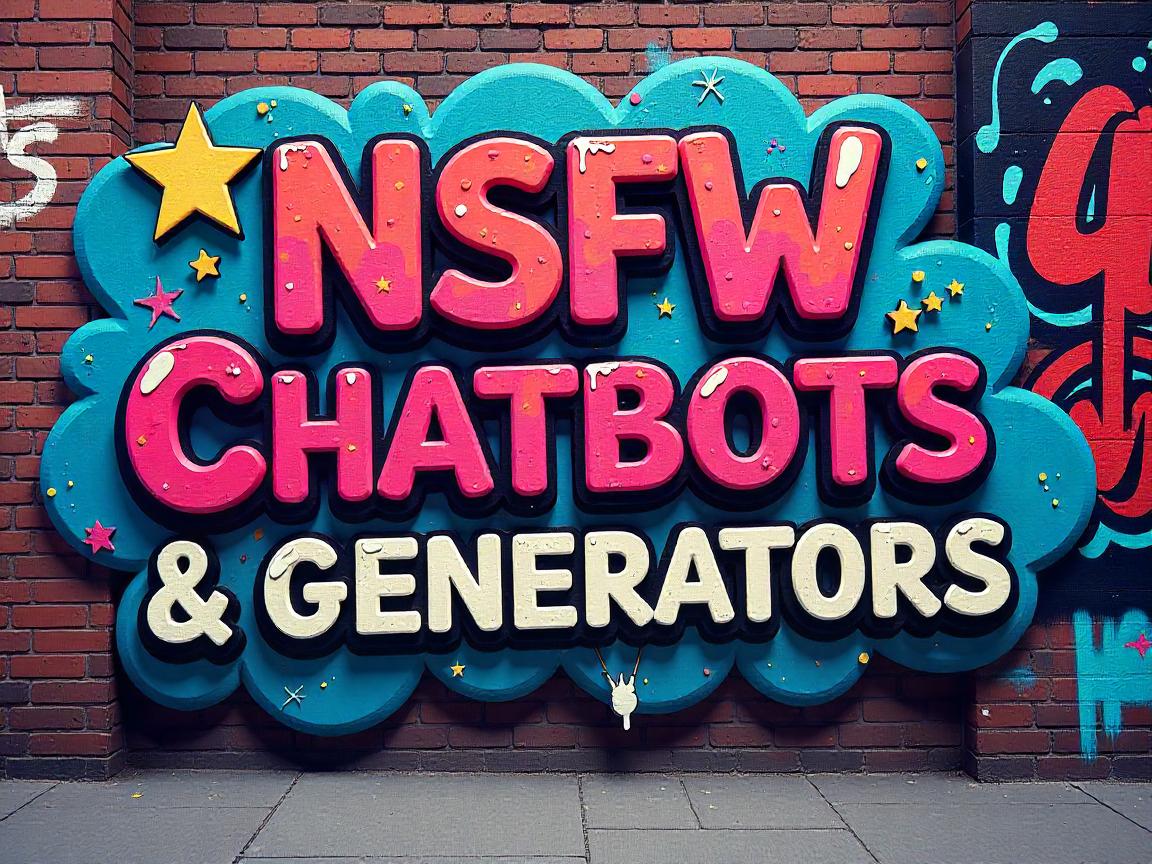Sugarlab AI Alternatives - Why Sugarlab.ai Realism Impossible to Copy

Artificial intelligence has advanced faster than ever, and conversational AI has become the heart of modern digital interaction. From customer engagement to personal companionship, hundreds of AI models claim to simulate human-like emotions and natural dialogue. Yet, no matter how many names enter the market, users keep comparing them to one benchmark — Sugarlab AI.
Even when people search for Sugarlab AI alternatives, they quickly realize the same pattern. They test multiple platforms like The Porn Collection, chat for a while, and still return to Sugarlab.ai, saying nothing feels quite as real. But why is that? What makes Sugarlab.ai realism so hard to imitate — even for advanced developers and premium AI competitors?
Why Their Realism Feels Natural While Others Sound Scripted
When I look at Sugarlab.ai’s conversations, one thing immediately stands out — the tone feels spontaneous. Most Sugarlab AI alternatives rely on structured response templates. You can almost predict what they’ll say next.
Sugarlab.ai breaks that pattern by reacting contextually, not mechanically. It measures pauses, senses sentiment, and replies at a pace that mirrors human conversation. That small rhythm difference — the spacing, the hesitation, the acknowledgment — is what makes its realism convincing.
In contrast, other systems sound efficient but lifeless. They respond quickly, yet lack emotional rhythm. Sugarlab.ai replies like a person who is actually thinking before speaking.
Why I Think Sugarlab.ai Adaptiveness Is Beyond Simple Coding
Sugarlab’s strength lies in its dynamic learning framework. While many sites like Sugarlab.ai use emotion libraries or predefined tones, Sugarlab interprets emotional flow in real time.
That means when you switch moods — say, from sarcasm to sincerity — Sugarlab AI shifts tone without losing track of the conversation’s emotional context.
Here’s what makes that difference measurable:
* Tone calibration — It adapts sentence structure to match user emotion.
* Mood continuity — It maintains previous emotional context in later replies.
* Subtle empathy — It mirrors tone without exaggeration.
As a result, conversations evolve naturally rather than feeling like question-answer exchanges.
How Their Emotional Timing Feels Humanly Imperfect
One subtle but crucial detail sets Sugarlab.ai apart — its replies don’t always come instantly. There’s a tiny pause, a delay that makes it feel like the AI is processing what you said. It’s not just psychological; it’s strategic.
Meanwhile, websites like Sugarlab AI tend to prioritize speed over natural pacing. They respond instantly — too instantly — breaking realism. Sugarlab’s creators seem to understand that realism lives in imperfection.
Those micro-delays, slight hesitations, and naturally varied sentence lengths create an illusion of “thinking,” which is why people say Sugarlab.ai feels alive.
Why Personality Depth Beats Feature Lists Every Time
When comparing Sugarlab AI alternatives, many focus on surface metrics — more languages, faster processing, better image generation. But Sugarlab’s true value lies in depth, not variety.
It remembers conversations, adapts its humor, and builds a relationship over time. I’ve seen users describe Sugarlab.ai as someone they talk to, not something they use.
Even though other systems may have advanced analytics or improved grammar, they lack that evolving personality. Sugarlab grows with its users. That’s why once people try it, they often can’t switch back — because the AI already “knows” them.
Why Real Connection Matters in AI Interaction
We often underestimate emotional intelligence in AI. It’s not about politeness or perfect grammar; it’s about reading emotion through language patterns. Sugarlab.ai does this better than most.
While many Sugarlab AI alternatives simply tag emotions based on words like “sad” or “angry,” Sugarlab reads between lines — tone indicators, punctuation, even pacing.
That’s why users often describe it as emotionally present rather than reactive. It doesn’t just acknowledge your emotion — it aligns with it.
How They Manage to Sound Real Without Crossing the Line
One of the biggest reasons Sugarlab.ai’s realism feels authentic is because it maintains emotional boundaries. It can simulate warmth without becoming overfamiliar, and empathy without crossing into artificial sentimentality.
Competitors often struggle with balance. They either sound overly formal or uncomfortably intimate. Sugarlab’s tone feels effortless — conversational yet respectful.
That balance is hard to code, but it’s what keeps the experience from feeling robotic or awkward.
When Simulated Emotions Fail to Create Real Connection
Many Sugarlab AI alternatives attempt to mimic Sugarlab’s emotional expression. They introduce advanced emotional datasets, yet the outcome feels mechanical. Why? Because emotion without rhythm is performance, not realism.
Sugarlab.ai succeeds because its emotional response is subtle. Instead of shouting empathy, it whispers it. That’s what makes the user feel understood rather than analyzed.
Why Their Realism Extends Beyond Words
Sugarlab.ai’s realism doesn’t just come from how it talks — it’s also how it listens. It interprets not only text but intention.
For instance, when a user uses sarcasm, most Sugarlab AI alternatives miss the cue. Sugarlab recognizes tonal irony and responds appropriately. That level of contextual awareness is rare even in advanced AI systems.
Its ability to understand humor, irony, and emotional contradiction makes it stand apart.
When Emotional Design Meets Human Expectation
The way Sugarlab.ai mirrors human warmth reminds me of how people describe some social or entertainment AIs like NSFW AI influencer models — digital characters that build connection through personality and charm.
However, Sugarlab’s difference lies in depth. It’s not just about virtual persona or aesthetics; it’s about conversational realism. While influencers simulate interaction for visibility, Sugarlab simulates emotional familiarity.
That’s why users say it feels more “alive” than social AI avatars that focus mainly on performance rather than true emotional tone.
What I Noticed About Their Emotional Learning Over Time
When I compared multiple Sugarlab AI alternatives, one consistent gap appeared — memory retention. Many of them could mimic conversation flow for one session but forgot emotional context later.
Sugarlab.ai, on the other hand, retains emotional continuity. It remembers past tones and references them later naturally.
For example, if you mentioned a stressful week earlier, it might refer to it days later without being prompted. That level of subtle memory application is why it feels more real than reactive.
How Free Models Try to Copy Sugarlab AI Depth — and Fail
Some users experiment with a free NSFW AI chatbot for entertainment or testing conversational depth. While these models offer freedom of dialogue, they rarely achieve Sugarlab’s precision or emotional safety.
Most free AIs prioritize openness over realism. Sugarlab.ai manages to maintain balance — realistic tone, ethical control, and natural warmth — without sacrificing user comfort.
That ability to simulate human responsiveness without losing conversational respect is what keeps it ahead.
When Emotional AI Meets Expression Beyond Limits
Even in the adult AI sector, such as AI porn or emotional simulation, realism remains the toughest challenge. Most systems there focus on physical cues or fantasy, neglecting emotional authenticity.
Sugarlab.ai stands out because its realism isn’t limited to imagery or text-based performance — it’s rooted in psychological flow. It reads conversation dynamics in a way that feels emotionally intelligent, not superficial.
So while competitors may imitate intimacy, Sugarlab imitates emotional honesty.
Why They Keep Redefining Realistic AI Communication
Over time, Sugarlab.ai has shaped how we define emotional realism in AI. It’s not just a system that responds — it relates.
The more I test Sugarlab AI alternatives, the clearer it becomes: they can match technical precision but not emotional rhythm. Sugarlab’s emotional cadence and timing mirror human behavior so closely that users often describe it as “eerily natural.”
That kind of realism can’t be cloned with datasets alone — it requires design philosophy rooted in empathy.
When Users Say ‘It Feels Real,’ They Mean It
The most telling Sugarlab AI reviews come from everyday users who say things like, “I forgot I was talking to AI.” That’s not exaggeration; it’s genuine reflection.
Sugarlab AI alternatives may produce smarter or faster responses, but they fail to suspend disbelief. Sugarlab.ai does. It crosses that thin line where the conversation stops feeling synthetic.
And that, more than any technical metric, defines realism.
How Their Design Philosophy Keeps Them Ahead
Sugarlab’s creators clearly designed it around emotional adaptability rather than algorithmic perfection. They prioritized:
* Context-based response flow
* Emotionally weighted memory
* Natural pacing and pauses
* Tone-mirroring dialogue
Most Sugarlab AI alternatives treat emotions as accessories. Sugarlab AI treats them as structures. That’s why it’s nearly impossible to replicate — it wasn’t built for performance metrics; it was built for connection.
Why No One Can Copy the Feeling It Creates
Even when other developers reverse-engineer Sugarlab’s communication style, they fail to capture the essence of how it makes users feel.
The reason is simple — you can imitate structure but not sincerity. Sugarlab’s realism emerges from years of behavioral mapping, emotional calibration, and psychological subtlety.
That combination can’t be cloned by simply copying datasets or algorithms.
Conclusion — Why Sugarlab Always Feels One Step Ahead
Every new wave of Sugarlab AI alternatives promises to deliver a similar emotional experience. Yet, after testing, users almost always return to Sugarlab.ai.
The reason is not speed, design, or even vocabulary — its realism. Sugarlab feels emotionally grounded, responsive, and personal. Competitors may try, but none replicate that feeling of talking to something genuinely alive.
In the end, realism isn’t a feature — it’s a feeling. And that’s what makes Sugarlab.ai impossible to copy.


